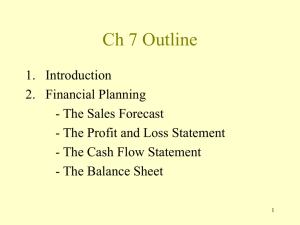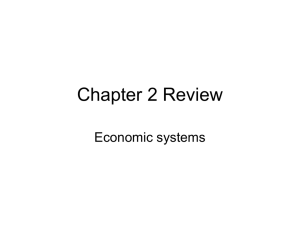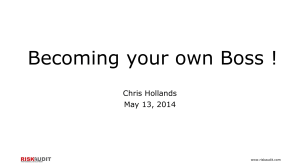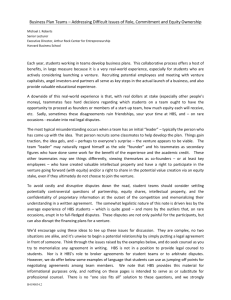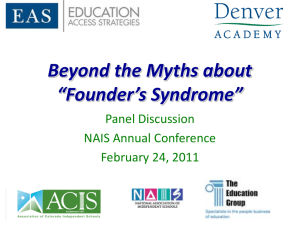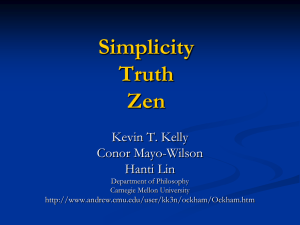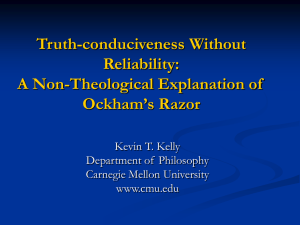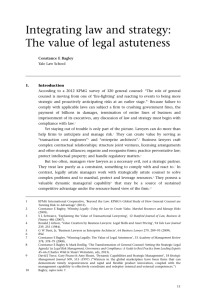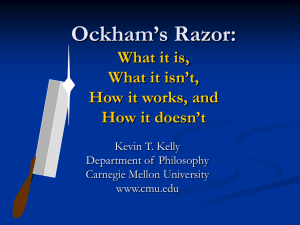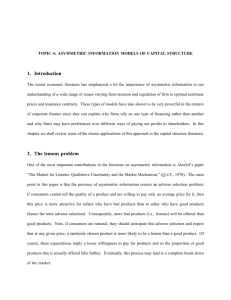Session 19 - Ockham Technologies.ppt
advertisement
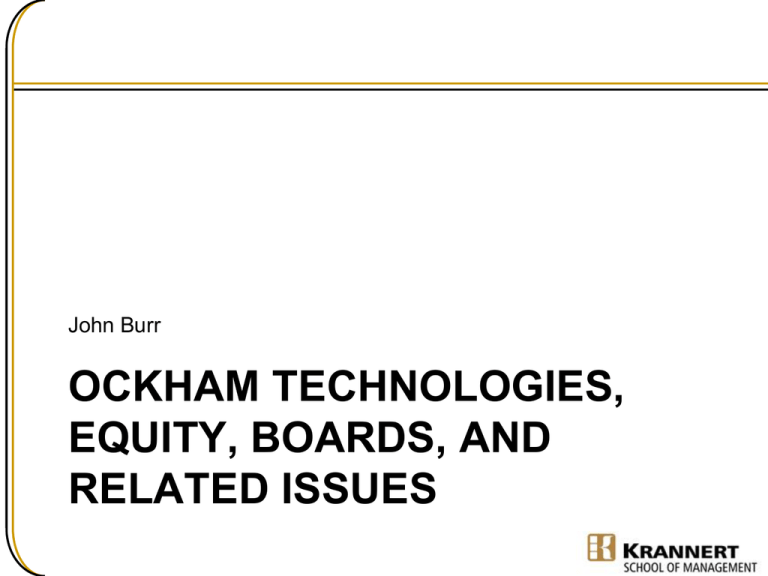
John Burr OCKHAM TECHNOLOGIES, EQUITY, BOARDS, AND RELATED ISSUES Ockham Technology – what happened? • Board of Directors – Raised first round from VCs (Noro-Moseley & Monarch), with each getting one seat on the board – Added a 5th, very experienced industry person • Development/outsourcing – – Outsourced to ThoughtMill – Also hired Gus as internal development team leader • Founder tensions – Tensions continued to grow, and worsened after Ockham hired a COO – Mike left • Company sold in 2002 to competitor Lesson #1 SPLITTING FOUNDER’S EQUITY Considerations in Allocating Initial Ownership • Potential Problem – Ockham founders split only based on amount of initial equity • Other criteria to use: – – – – What cash, ideas, & property contributed? If property, what is value? What contributions are founders expected to make in the future? What opportunity costs will each founder incur? • Career risk taken by each founder • Financial demands faced by each founder – May have to reserve ownership for future founders. Potential problem - split equity very early Dynamic equity-splitting Person Initial share of equity Share if FULLTIME involvement on 4/19/2000 Share if only PARTIAL involvement on 4/19/2000 Share if NO involvement on 4/19/2000 Ken 20% 20% 10% - as per 2.1(b) 0% - as per 2.1(a) Jim 50% 50% 50% - as per 2.1(a) 0% - as per 2.1(a) Mike 30% 30% 30% - as per 2.1(a) 0% - as per 2.1(a) Lesson #2 BUILDING A BOARD Boards and new ventures •Texas angel – $10 mm, 50% stake (“Dumb” money) •VC - $2 mm, 33% stake (“Smart” money) •Does VC create $48 mm in value? ($8mm / 16.7%) Control & Ownership Advice & Resources to build pie The Benefits of Having an Independent Board • Brings perspective and experience, and a set of complementary skills for the CEO • Recognize the need for long-term planning and assist in long-range strategies • Can provide a framework for control and discipline and give CEO someone to answer to • Can be challenging and objective critics, serving as an internal check for CEO • Can be mentor or coach • Can lend credibility Source: Bagley, CE & Dauch, CE. The Entrepreneur’s Guide to Business Law, West Publishing. The Size of the Board • 5-9 people – Small enough to be accountable and to act as a deliberate body, but large enough to carry out the necessary responsibilities. • Outsiders should outnumber the insiders • Usually, no more than 2 insiders on the board. Source: Bagley, CE & Dauch, CE. The Entrepreneur’s Guide to Business Law, West Publishing. Type of Representation Needed on Board • Need functional skills needed to keep the business running smoothly and to bring business to next level of growth • Need right mix of personalities • Should inventory the resource needs of the company before you begin recruiting the board: – What is the competitive advantage of the company? – What will be the demands on the company and the likely changes in the next few years? – How much technical expertise is needed to understand the company’s practices? – What role does marketing play? R&D? Customer service? – What is the company’s access to financing? Source: Bagley, CE & Dauch, CE. The Entrepreneur’s Guide to Business Law, West Publishing. Type of Representation Needed – The needed skills • Assess management team’s strengths and weaknesses with regard to industry experience, financial expertise, marketing experience, start-up experience, and technical know-how, maybe international experience. • Age, gender and cultural background • Be wary of filling board with: – People whose interests may not be aligned with the company’s, or to whom the company already has access. – Attorney – Subordinates to CEO – Consultants Source: Bagley, CE & Dauch, CE. The Entrepreneur’s Guide to Business Law, West Publishing. Lesson #3 OUTSOURCING & NEW VENTURES Reasons new ventures outsource • At early stages, founders are stretched too far • Founding team may lack relevant capabilities • Working on tight deadlines • Adds flexibility when when a company is still experimenting with its business model • Negative: May lack a level of control for critical function Lesson # 4 SOCIAL CAPITAL & ENTREPRENEURSHIP Entrepreneurship exists precisely because people do not have equal information or beliefs - Kirzner (1973) If a resource owner held the same beliefs and information as an entrepreneur, she would adjust the price to the point where the entrepreneurial profit would be eliminated. Problem Domain: seeking capital or other resources Dilemma 1: Entrepreneurs are reluctant to fully disclose idea Dilemma 2: Entrepreneur can engage in opportunistic behavior A MARKET FOR LEMONS What did Ockham do to signal qualilty? Sample of over 64,000 Swedish males followed between 1994-2001. Folta, T.B.; Delmar, F.; Wennberg, K. 2010. Hybrid Entrepreneurship. Management Science. Folta, T.B.; Delmar, F.; Wennberg, K. 2010. Hybrid Entrepreneurship. Management Science. SOLUTIONS TO THE LEMON’S PROBLEM Incentives Staging of capital Due Diligence Social Capital SOLUTIONS TO A SECOND PROBLEM – EX POST MONITORING Board of Directors Keys to subsequent capital Social Capital Social ties “interject expectations of trust and reciprocity into the economic exchange that, in turn, activate a cooperative logic of exchange. This logic promotes the transfer of private information and resources … and motivates [both parties] to search for integrative rather than zero-sum outcomes.” Uzzi and Gillespie (1999: 33) Reputation Information Networks What is Social Capital? Referrals Personal Ties
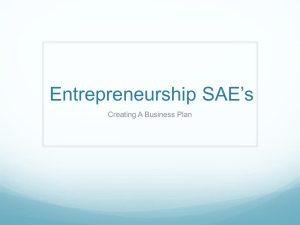

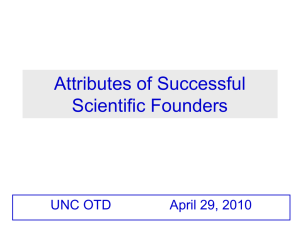


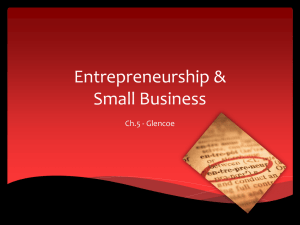

![Structuring Startups []](http://s2.studylib.net/store/data/005555447_1-d1811bd8bcb012343b3aa04cfb211821-300x300.png)
